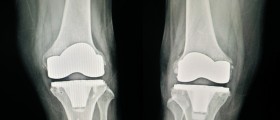
Kyphoplasty is a type of surgery performed in patients suffering from back pain due to compression fracture of the vertebral column. Compression fracture (compression crack) is responsible for compression of a rectangular shaped bone in the vertebral column and its collapse. In majority of cases such fracture affects people suffering from severe osteoporosis of the spinal column.
In order to deal with all the unpleasant and sometimes unbearable symptoms such as intense back pain, sleeping problems, reduced lung and alimentary functions as well as difficulty performing every day tasks, which all occur as a consequence of compression crack, doctors may opt for this type of surgery. The goal of kiphoplasty is to Renovate the strength and size of the fractured bone.
Kiphoplasty- the Surgical Procedure
Kiphoplasty is always performed under general anesthesia. During the surgery the doctor makes two small openings in the spinal column and inserts long, thin needles. In order to reach the cracked area the doctor uses a narrow tube. The entire procedure is only possible if there is guidance achieved by fluoroscopy. Namely, fluoroscopy guides insertion of a small balloon into the vertebrae. Once the surgeon has created the desirable cavity space in the vertebrae the balloon is removed. What follows is filling of the created cavity with cement like material (polymethylmethacrylate). The material is of great importance for tightening and stabilizing the affected bone.
What are Side Effects of Kiphoplasty?
Fortunately, when it comes to kiphoplasty there have not been any major side effects reported. The most common problems associated with the surgery include anesthesia problems, formation of blood clots, infections, cement leakage and nerve root damage. Some patients may have to deal with ongoing pain after the surgery.
Problems with anesthesia may be successfully prevented if patients report all the allergies they are suffering from (particularly allergy to medications). It is also possible to face other health issue regarding anesthesia, but a well experienced doctor handles the problem with quite a success.
After the surgery some patients are at higher risk for blood clot formation and consequent deep vein thrombosis. If left untreated, deep vein thrombosis may result in even more serious problem, pulmonary embolism. In order to prevent all the mentioned patients are due to wear pressure stockings and they generally receive blood thinners. These measures are particularly required in people more susceptible to increased blood clotting.
Infections after kiphoplasty generally affect the outer skin and are easily treated with suitable antibiotics. Inner infections (those that affect surgically treated part of the spine) may require another procedure.
Cement leakage is a rare but possible complication which occurs either during or after the surgery. Additional complications associated with cement leakage include further compression of the spinal cord or spinal nerves. Cement leakage also requires repeated surgery.
And finally, one more potential complication of kiphoplasty is nerve root damage. The most commonly damaged nerves are those near the operated area. This side effect may cause additional health problems. Tingling or numbness of the body area innervated by the damaged nerve are only two of them.






-Test-And-What-Do-The-Results-Mean_f_280x120.jpg)










Your thoughts on this
Loading...